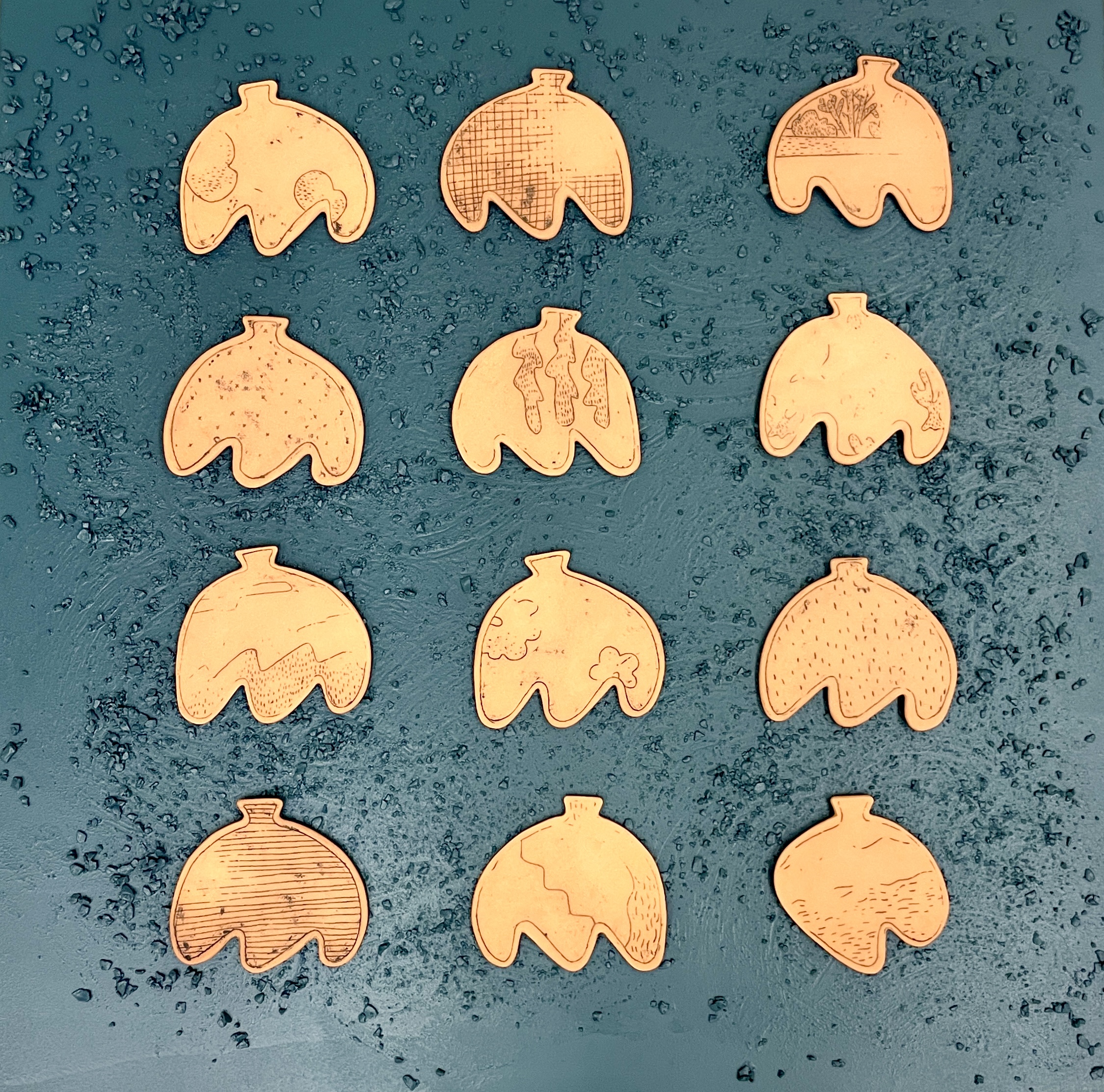by Aaron Wilder, Curator of Collections and Exhibitions at the Roswell Museum
© Roswell Daily Record
“Cosmic Codex cc20-23” by Dina Perlasca, 2023, Terracotta and Terracotta Clay-Plated Wood Frame, Photo Courtesy of Dina Perlasca
What are “force fields” and how do they impact our senses of reality and identity — past, present and future? Artist Dina Perlasca confronts this question in her first solo exhibition at a museum since receiving her Master of Fine Arts degree from New Mexico State University in 2022. The exhibition Dina Perlasca: Campos de Fuerza / Force Fields is on view at the Roswell Museum. The idea of a force field can be understood through a multitude of approaches, each of which can provide new layers of insight into Perlasca’s artistic concepts and materials.
In physics, a force field is the space in which an inert object experiences movement as the result of impact with a force that does not make physical contact. For example, magnetism is something Perlasca explores in her practice through her use of iron as a material. “Iron stone clay is made mostly of iron, and it has so much of this material that it is magnetic,” she said. “The origin of Earth’s magnetic field is still a mystery, but we know that it makes Earth unique, it sets the direction of our compasses and gives us our north, our sense of location as well as acting as a shield against solar winds that would erode our atmosphere otherwise. Iron stone clay as a material of choice reveals the powerful qualities it has as an armor and protector ….”
While the field of physics provides the earliest and most basic or fundamental understanding of this phenomenon, the most common usage and understanding of a force field is from the genre of science fiction, where the concept from physics is applied more imaginatively. Writers and artists have speculated the synthetic creation of a force field through technology or an individual or being willing a force field into existence. The basic idea is the creation of a barrier, either visible or invisible, that is less of a natural phenomenon and more of an intentional creation to deflect external energy or disintegrate approaching objects, to hide or protect oneself or something, to provide space to sustain life in an uninhabitable locale, or some combination thereof.
One point of connection between the idea of a force field in science fiction and Perlasca’s artistic practice is through culture-specific processes of trying to understand the unknowable. “(There was a) significant period of time I spent recuperating at my grandfather’s ranch in Xicalango, Hidalgo, México, after a car accident where I lost my memory,” she said. “During my time at the ranch, I learned more about the magical jungle and the mythical creatures …. In Náhuatl mythology, certain women are chosen by the universe to have mystical powers. Through a fire ritual, some of these chosen women who have become corrupted turn themselves into Brujas, balls of fire that jump and float atop … the jungle canopy. The Brujas travel from village to village seeking human blood, which they need to survive … an undying and an evil inheritance from the past, the Brujas are shapeshifters that live among us undetected … What I came to understand myself is that the evil in such myths should not necessarily be located externally. All individuals have the capacity to incorporate the inherited evil … or resentful hunt for blood of the Brujas if they are not conscious of their own insecurities.”
In the social sciences the practice of force-field analysis investigates social forces that can help or hinder progress in relation to a goal. Social psychologist Kurt Lewin developed this concept as a way to understand the multitude of forces in an environment at a particular point in time. This environment can be understood as a dynamic network of influences upon overlapping psychological (individual) and social (group) consciousnesses. Anxieties, goals, ideals, moods, motives, needs and values are all examples of potential factors comprising an individual’s or group’s “field.” According to Lewin, when a “field” experiences change due to exposure to external stimuli — possibly from interaction with the “field” of another individual or group — the resulting “boundary zone” impact leads to some notion of progression or regression.
As a product of the environment, artificially polarized by the synthetic creation of the México/U.S. border, the artist’s “field” is constantly interacting with elements of this “boundary zone” and the related cultural, economic, and political forces. Taking in these multiple, overlapping experiences of progression and regression simultaneously, Perlasca’s resulting in-between, uncanny environment births a new culture. “I celebrate all the people, places, and cultures my family has inhabited throughout the story of our linear time in history,” she says. “I do not only respond to the aesthetics of the past, I also respond deeply to the time in which I live, the environment that surrounds me, and the future I envision for generations to come.”
As such, one could consider the complex environments Perlasca creates in the gallery as a fusion of many different conceptual and material ingredients to encourage us all to imagine possible alternative futures for the “boundary zone” overshadowing many aspects of our region.
The exhibition Dina Perlasca: Campos de Fuerza / Force Fields is on display in the Roswell Museum’s Donald B. Anderson Gallery through Aug. 27. For more information about the Roswell Museum, visit roswellmuseum.org.